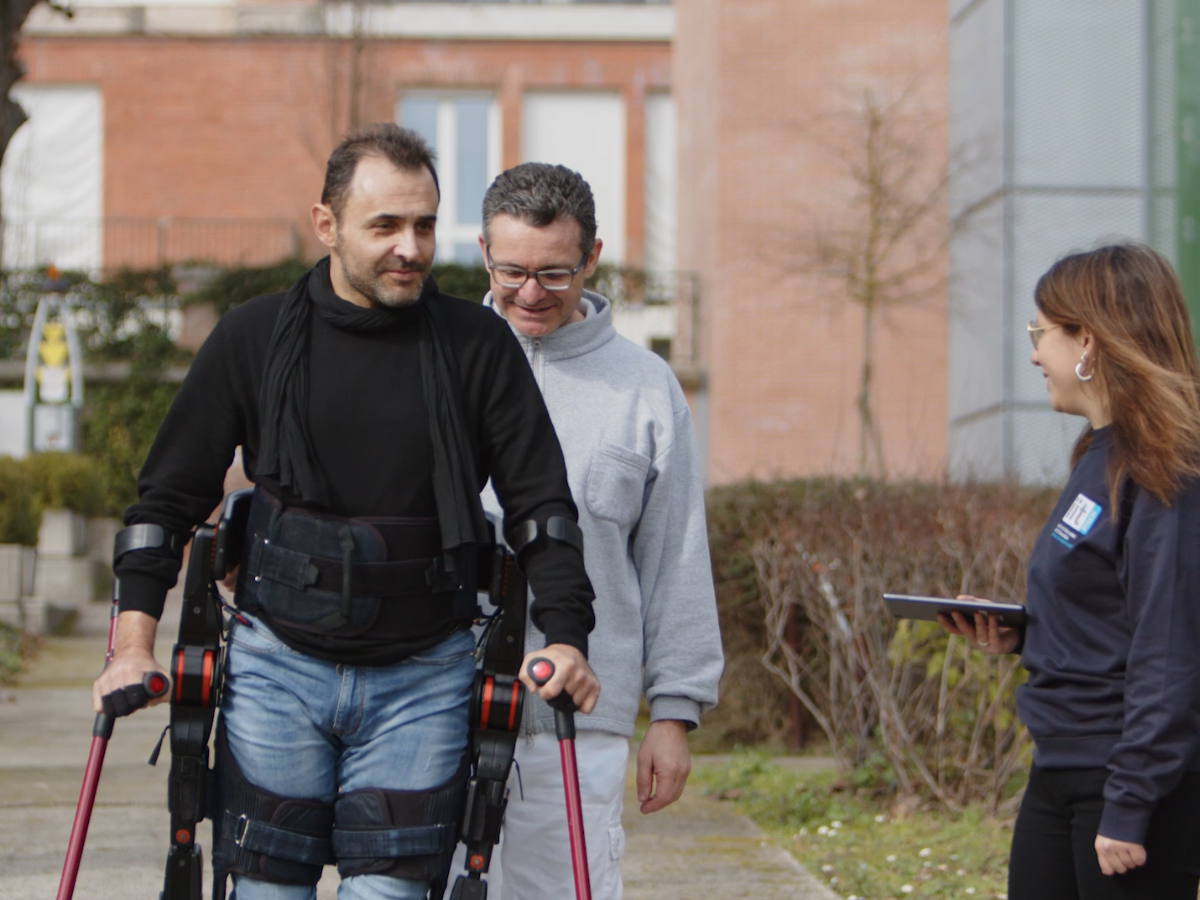Reviewed by Lexie CornerFeb 26 2024
TWIN, the latest robotic exoskeleton designed for lower limbs, has been created by Rehab Technologies IIT – INAIL, a collaborative venture between the Istituto Italiano di Tecnologia (IIT-Italian Institute of Technology) and the Prosthetic Center of INAIL (the prosthetic unit of the National Institute for Insurance against Accidents at Work).

Image Credit: Italian Institute of Technology
This innovative device aims to provide enhanced ease of wear for patients. Unveiled today in Milan at a press conference hosted at the Museum of Science and Technology, TWIN was demonstrated by two patients who participated in the system's testing during its development phase. While TWIN is currently in the prototype stage, researchers are optimistic about advancing it to industrial production in the near future.
The IIT’s Rehab Technologies Lab, run jointly by the Prosthetic Center of INAIL in Budrio (Bologna) and the IIT in Genoa, is where the exoskeleton TWIN started. Matteo Laffranchi is in charge of this lab. The partnership was established at the close of 2013 to create cutting-edge, high-tech, reasonably priced solutions for patients with physical disabilities.
Alex Santucci is a patient who was involved in clinical trials as a tester. He accompanied technicians and researchers during the device's entire design phase. The clinical trials were conducted at the Montecatone Rehabilitation Institute in Imola, Villa Beretta in Costa Masnaga (LC), and the Prosthetic Center of INAIL in Vigorso di Budrio.
The motorized exoskeleton TWIN is an external structure that boosts the physical capabilities of its user. It is specifically designed to help individuals with limited or no motor function in their lower limbs, such as those with complete spinal cord injuries. The exoskeleton supports maintaining an upright posture, walking with the assistance of crutches or walkers (as it does not balance on its own), and performing sit-to-stand and stand-to-sit movements.
TWIN is unlike anything else on the planet because of two things: it is constructed of lightweight materials like aluminum alloy and is divided into modular parts that make it easier to use and transport. Telescopic links positioned at the level of the femur and tibia also allow the structure to be adjusted in accordance with the physical characteristics of the patient.
The size of ankle and foot supports can be adjusted to suit the user's needs, regardless of gender, age, or size. The operating modes of TWIN can also be adjusted to the patient’s needs, taking into account their level of motor deficit and, in particular, their capacity for independent walking.
An operator, such as a physiotherapist, can operate TWIN by installing a particular Android application on the given tablet. The graphical user interface enables the user to set the kinematic movement parameters, select different step execution modes, and control the exoskeleton during the performance of various programmed activities.
Three operating modes are available for the exoskeleton. “Walk mode” is intended for patients without motor function and in which the device imposes a walking pattern based on preprogrammed parameters.
“Retrain mode” is designed for patients with partial lower limb motor function impairment who can move somewhat independently but find it difficult in some step phases. In this mode, the exoskeleton assists the patient’s movement with varying degrees of intensity and steers them toward an ideal reference trajectory.
“TwinCare mode” is intended for patients with partial and differentiated motor impairment between the two limbs, where one leg is healthy and can move independently while the other requires assistance, more or less pronounced, in certain step phases.
By causing the knee and hip joints to contract, the TWIN motors force the patient's limbs to move in a manner that can be fully customized in terms of walking speed and step length. The battery needs an hour to fully recharge and has a four-hour lifespan.
TWIN can be worn every day, even for a short while, in addition to rehabilitation clinics during physiotherapy sessions. This is because sitting up straight has major advantages for wheelchair users’ musculoskeletal, circulatory, psychological, and digestive system functionality.
The industrialization process will come after CE marking, which TWIN will accomplish in collaboration with an industrial partner. Patients in need can use TWIN once it is available on the market to help severely injured workers reintegrate into their social and professional environments.